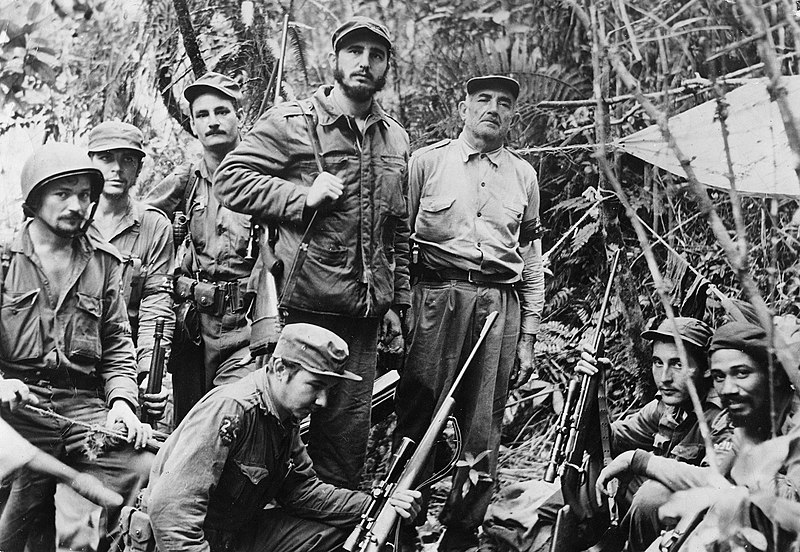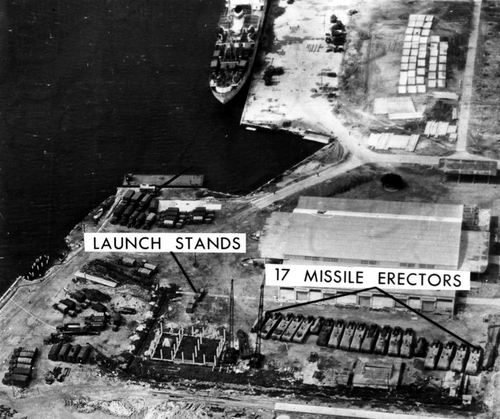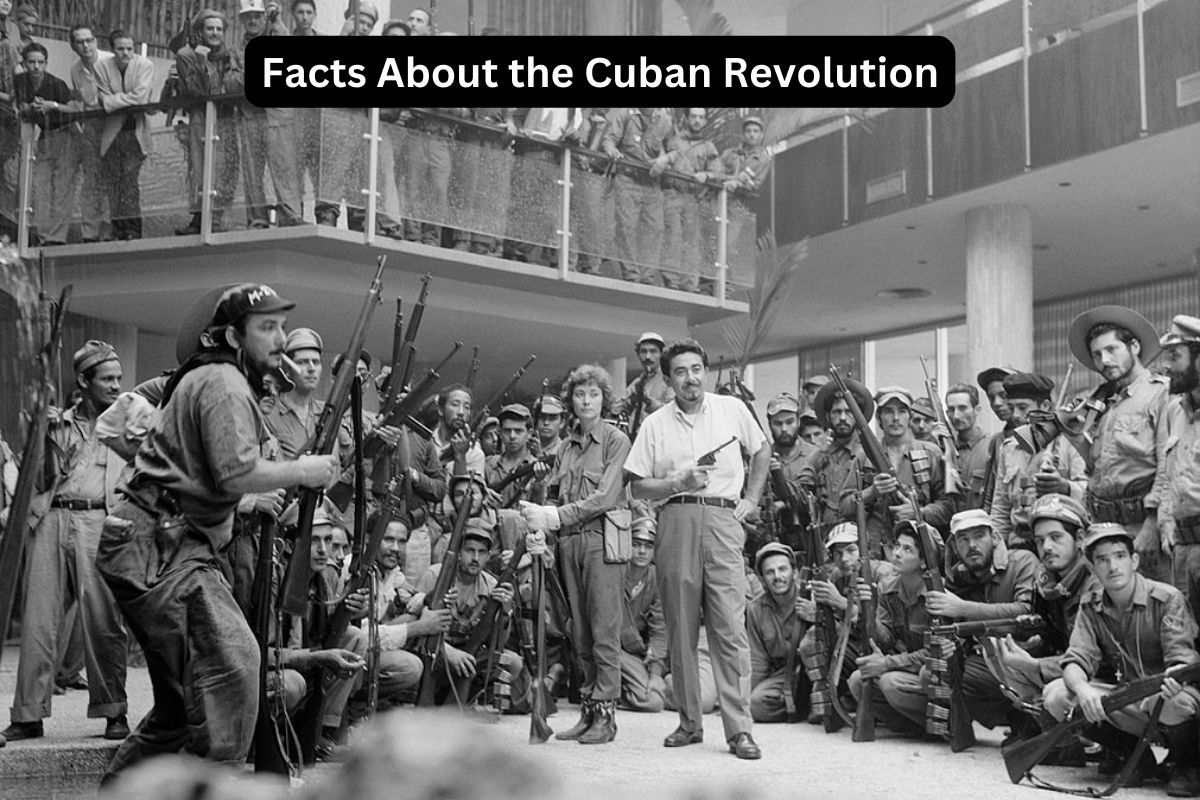The Cuban Revolution stands as one of the most significant events of the 20th century, its impact rippling far beyond the shores of the Caribbean island.
Rooted in social inequality and fueled by the fervor of its leaders, including Fidel Castro and Che Guevara, the revolution transformed Cuba’s political, economic, and social landscape.
In this brief overview, we delve into the origins, key events, and enduring legacy of the Cuban Revolution, exploring its multifaceted nature and the controversies it continues to inspire.
From guerrilla warfare in the Sierra Maestra mountains to the Bay of Pigs invasion and the Cuban Missile Crisis, we navigate through the tumultuous chapters of Cuban history, shedding light on the revolution’s complexities and its lasting imprint on the world stage.
Cuban Revolution Facts
1. Origins in Social Inequality
The seeds of the Cuban Revolution were sown in the deep-rooted social and economic inequalities prevalent in Cuba under the dictatorship of Fulgencio Batista.
Also Read: History of Cuba Timeline
The majority of Cubans, especially rural peasants, faced poverty, lack of access to education and healthcare, and limited political freedoms. Meanwhile, a small elite, including foreign corporations and wealthy landowners, controlled much of the country’s wealth and resources.
This stark divide between the haves and have-nots created fertile ground for discontent and revolutionary fervor among the marginalized segments of society.

2. July 26 Movement
Named after the failed attack on the Moncada Barracks on July 26, 1953, the July 26 Movement was a key organization behind the Cuban Revolution.
Led by Fidel Castro, along with other prominent figures like his brother Raúl Castro and Ernesto “Che” Guevara, the movement sought to overthrow the Batista regime and bring about social justice and economic equality in Cuba.
Despite the initial setback at Moncada, the movement gained momentum and eventually succeeded in mobilizing popular support for its revolutionary cause.
3. Fidel Castro’s Leadership
Fidel Castro emerged as the charismatic and determined leader of the Cuban Revolution. A lawyer by training, Castro possessed exceptional oratory skills and a fervent commitment to social justice, which resonated with many Cubans disillusioned with the Batista regime.
Also Read: Timeline of the Cuban Revolution
His leadership was characterized by strategic acumen, resilience in the face of adversity, and a deep connection with the masses. Castro’s ability to inspire and unite diverse factions under the banner of the revolution played a pivotal role in its ultimate success.
4. Guerrilla Warfare
The Cuban Revolution is notable for its strategic use of guerrilla warfare tactics, particularly in the rugged terrain of the Sierra Maestra mountains. Fidel Castro and his fellow revolutionaries, including Che Guevara, waged a protracted armed struggle against the Batista regime, employing hit-and-run tactics, ambushes, and sabotage operations.
By operating from remote hideouts and building alliances with sympathetic peasants, the guerrilla fighters were able to gradually wear down Batista’s better-equipped military forces.
The guerrilla campaign not only undermined the regime’s control over the countryside but also captured the imagination of the Cuban people and garnered international attention, bolstering support for the revolution.

5. International Support
The Cuban Revolution received significant support from various international actors, contributing to its success. This support came from different quarters, including other Latin American revolutionaries, leftist intellectuals, and sympathetic governments.
The revolutionary fervor in Cuba resonated with similar movements across the region, inspiring solidarity and cooperation among anti-imperialist forces.
Additionally, the Soviet Union provided crucial backing to Castro’s government after the revolution’s triumph, offering economic aid, military assistance, and diplomatic support. This support helped Cuba weather the hostility of the United States and consolidate its revolutionary gains.
6. Triumph and Nationalization
On January 1, 1959, the Cuban Revolution culminated in the overthrow of the Batista regime and the establishment of a new revolutionary government led by Fidel Castro.
The revolutionaries’ seizure of power marked a turning point in Cuban history, heralding a radical transformation of the country’s political, economic, and social landscape.
One of the first actions of the new government was the nationalization of key industries, including sugar, mining, and utilities, as well as the expropriation of large landholdings owned by foreign corporations and wealthy elites.
These measures aimed to dismantle the entrenched structures of exploitation and inequality, redistributing wealth and resources to benefit the Cuban people.
The nationalization process was met with both domestic acclaim and international condemnation, setting the stage for Cuba’s emergence as a socialist state and a focal point of Cold War tensions.
7. Bay of Pigs Invasion
In April 1961, the United States attempted to overthrow Fidel Castro’s government through a covert operation known as the Bay of Pigs invasion.
The plan involved training and arming Cuban exiles to launch a military assault on Cuba with the hope of sparking a popular uprising against Castro. However, the invasion ended in a resounding failure, as Cuban forces swiftly repelled the attackers within a matter of days.
The Bay of Pigs fiasco was a humiliating defeat for the United States and a propaganda victory for the Cuban government, strengthening Castro’s grip on power and deepening his resolve to resist American imperialism.

8. Cuban Missile Crisis
The Cuban Missile Crisis, which occurred in October 1962, was a pivotal moment in the Cold War and a direct consequence of the Cuban Revolution. The crisis was precipitated by the discovery of Soviet nuclear missiles stationed in Cuba, prompting a tense standoff between the United States and the Soviet Union.
For thirteen days, the world teetered on the brink of nuclear war as the two superpowers engaged in high-stakes brinkmanship.
Ultimately, a diplomatic resolution was reached, with the Soviets agreeing to withdraw their missiles from Cuba in exchange for a pledge from the United States not to invade the island and a secret commitment to remove American missiles from Turkey.
The Cuban Missile Crisis underscored the dangers of superpower rivalry and the precariousness of the global balance of power, leaving a lasting impact on international relations.
9. Social Reforms and Education
One of the hallmarks of the Cuban Revolution was its ambitious program of social reforms aimed at improving the welfare of the Cuban people. The revolutionary government implemented sweeping changes in healthcare, education, and social welfare, with a particular emphasis on providing universal access to basic services.
A comprehensive healthcare system was established, offering free medical care to all citizens and prioritizing preventative medicine and public health initiatives. Similarly, the education system was overhauled, with the goal of eradicating illiteracy and expanding educational opportunities for all.
As a result of these initiatives, Cuba achieved impressive gains in literacy rates, life expectancy, and other indicators of human development, earning international recognition for its achievements in social welfare.
10. Enduring Legacy and Controversies
The Cuban Revolution has left a profound and enduring legacy, shaping the course of Cuban history and exerting a significant influence on global politics.
On one hand, the revolution is celebrated as a symbol of anti-imperialist struggle and social justice, inspiring movements for liberation and self-determination around the world.
The revolution’s commitment to sovereignty, independence, and social equality resonates with many who see it as a beacon of hope in the face of oppression and injustice.
However, the revolution is also a source of controversy and debate, with critics pointing to concerns about political repression, human rights abuses, and economic hardship under Castro’s regime. The Cuban Revolution remains a complex and multifaceted phenomenon, continuing to evoke passionate reactions and differing interpretations to this day.
